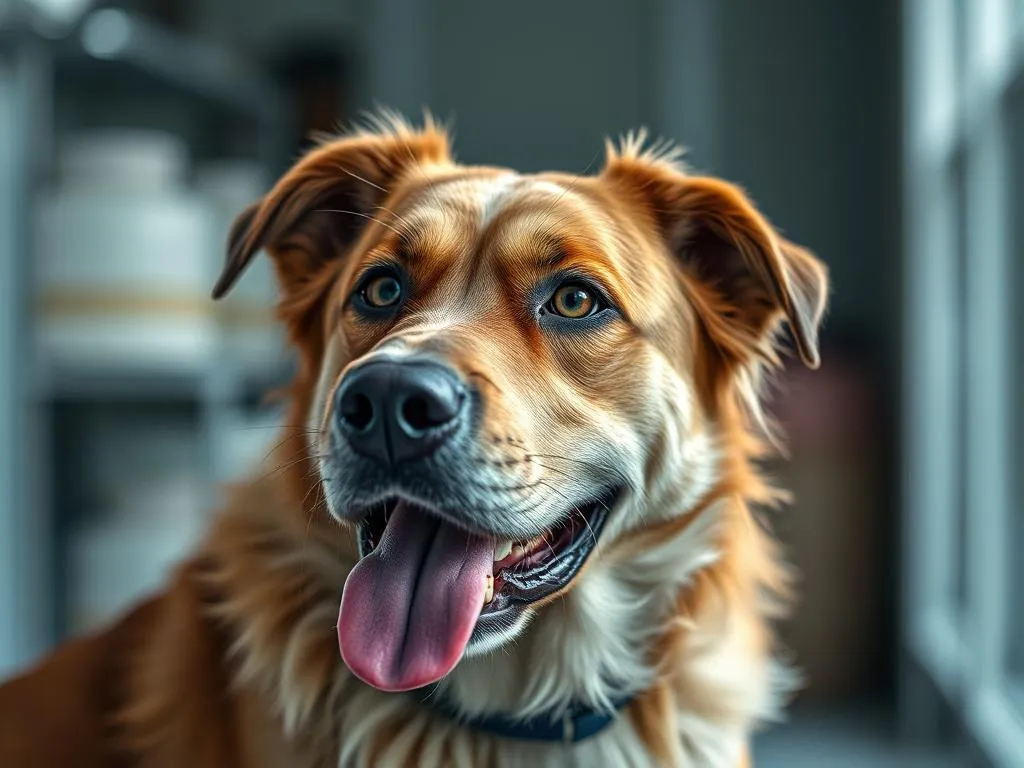
Introduction
Dehydration is a serious health concern for dogs that can lead to severe health issues if not addressed promptly. In the context of dogs, dehydration refers to a state where the body loses more water than it takes in, disrupting the balance of fluids necessary for optimal functioning. Just like humans, dogs require a constant supply of water to maintain their bodily functions, regulate temperature, and support vital processes.
Proper hydration is crucial for a dog’s overall health, impacting everything from digestion to joint lubrication. When a dog is well-hydrated, it can perform better, have more energy, and enjoy a better quality of life. Therefore, understanding the signs, causes, and treatments for dehydration in dogs is essential for every pet owner. This article aims to provide a comprehensive overview of canine dehydration, equipping readers with the knowledge needed to keep their furry friends healthy and hydrated.
Understanding Canine Dehydration
What is Dehydration?
Dehydration occurs when a dog’s body loses more fluids than it consumes. This imbalance leads to a deficiency of water and electrolytes in the body, which can affect normal physiological functions. The body relies on water for various processes, including digestion, circulation, temperature regulation, and joint lubrication. When dogs become dehydrated, they may experience a range of health issues, from mild discomfort to severe medical emergencies.
Causes of Dehydration in Dogs
Lack of Water Intake
Dogs may not drink enough water for several reasons. Some dogs are naturally less inclined to drink, while others may refuse water due to changes in their environment, stress, or illness. Additionally, during travel or outdoor activities, access to fresh water may be limited, leading to dehydration.
Excessive Heat
Hot weather can significantly increase a dog’s risk of dehydration. Dogs lose water quickly through panting, especially after vigorous exercise or being left in hot environments. During the summer months, it is crucial for pet owners to monitor their dogs closely and ensure they have ample access to water.
Illness
Certain illnesses can lead to dehydration due to symptoms like vomiting, diarrhea, and fever. Conditions such as parvovirus, kidney disease, or infections can cause rapid fluid loss, making it essential for owners to be vigilant about their dog’s health and hydration levels.
Medications
Some medications can contribute to dehydration in dogs, either by increasing urination or causing gastrointestinal distress. If your dog is on medication, consult your veterinarian about potential side effects and the importance of maintaining hydration.
Symptoms of Dehydration in Dogs
Early Signs
Recognizing the early signs of dehydration in dogs can help prevent more severe consequences. Some initial symptoms include:
- Dry, sticky gums
- A dry nose
- Loss of appetite
- Reduced energy levels
- Slightly sunken eyes
Moderate Symptoms
As dehydration progresses, symptoms become more pronounced. Moderate signs include:
- Lethargy or decreased activity
- Dry mouth and gums
- Decreased skin elasticity (when the skin is pinched, it does not return to normal quickly)
- Mildly increased heart rate
Severe Symptoms
Severe dehydration is a medical emergency that requires immediate attention. Critical signs include:
- Sunken eyes
- Rapid heartbeat
- Weakness or collapse
- Hypothermia or fever
- Difficulty breathing
If you observe any of these symptoms in your dog, seek veterinary assistance immediately.
Diagnosing Dehydration in Dogs
Veterinary Examination
If you suspect your dog is dehydrated, a veterinary examination is crucial. A vet will assess your dog’s hydration status through a combination of physical examinations and diagnostic tests. They will evaluate your dog’s overall health and may recommend treatments based on the severity of dehydration.
Physical Assessment Techniques
Skin Turgor Test
One common method to assess dehydration is the skin turgor test. To perform this test, gently pinch the skin on the back of your dog’s neck or between the shoulder blades. In a well-hydrated dog, the skin should quickly return to its normal position. In a dehydrated dog, the skin remains tented for a longer period.
Gums and Mucous Membranes
Another assessment method involves examining your dog’s gums and mucous membranes. Healthy gums should be moist and pink. If the gums appear dry or tacky, or if the color is pale, your dog may be dehydrated and requires veterinary attention.
Treatment Options for Dehydration
Home Care for Mild Dehydration
For dogs exhibiting mild signs of dehydration, there are several home care strategies to encourage water intake:
- Flavored Water: Adding low-sodium chicken or beef broth to your dog’s water can entice them to drink more.
- Ice Cubes: Many dogs enjoy chewing on ice cubes, which can help hydrate them.
- Wet Food: Incorporating wet food into your dog’s diet can also boost their fluid intake.
Veterinary Treatments
Intravenous Fluids
For moderate to severe dehydration, veterinary intervention is often necessary. Intravenous (IV) fluids are administered to quickly restore hydration levels and electrolyte balance. This method allows for rapid absorption of fluids, making it the most effective treatment for severe cases.
Subcutaneous Fluids
Subcutaneous fluids, administered just under the skin, may also be an option for some dogs. This method is less invasive than IV fluids and can be done in a veterinary clinic or at home under a vet’s guidance. It is often used for dogs with chronic dehydration issues.
Preventing Dehydration in Dogs
Providing Access to Fresh Water
One of the simplest ways to prevent dehydration in dogs is to ensure they always have access to fresh, clean water. Regularly check and refill water bowls, especially during hot weather or after vigorous exercise.
Recognizing Hot Weather Risks
During warm months, keeping your dog cool is vital. Here are some tips for preventing overheating and dehydration:
- Limit exercise during peak heat hours (typically mid-afternoon).
- Provide shaded areas during outdoor play.
- Offer frequent breaks and water breaks during exercise.
Monitoring Activity Levels
Adjusting your dog’s activity based on temperature and humidity is crucial. On hot days, consider shorter walks, more indoor playtime, and frequent hydration breaks to keep your dog safe from overheating and dehydration.
Special Considerations
Hydration Needs for Different Breeds
Hydration needs can vary significantly among dog breeds. Larger breeds may require more water due to their size, while smaller breeds may have different hydration patterns. Understanding your dog’s specific breed requirements can help you tailor their hydration needs accordingly.
Senior Dogs and Dehydration
Older dogs are more susceptible to dehydration due to age-related health issues and decreased thirst drive. It’s essential for owners of senior dogs to monitor their hydration closely and ensure they are drinking enough water daily.
Dogs with Health Conditions
Dehydration can be a significant concern for dogs with chronic health conditions, such as diabetes or kidney disease. If your dog has a pre-existing condition, it is crucial to work with your veterinarian to develop a hydration plan tailored to their needs.
Conclusion
In summary, proper hydration is vital for maintaining a dog’s health and well-being. Understanding the causes, symptoms, and treatment options for dehydration in dogs can empower pet owners to take proactive measures in preventing this serious condition. By being vigilant and attentive to their dog’s hydration needs, owners can help ensure their furry companions remain healthy and happy for years to come. Monitoring water intake, being aware of environmental risks, and seeking veterinary care when necessary are all essential steps in protecting your dog’s health.
Remember, your dog’s well-being starts with hydration!









